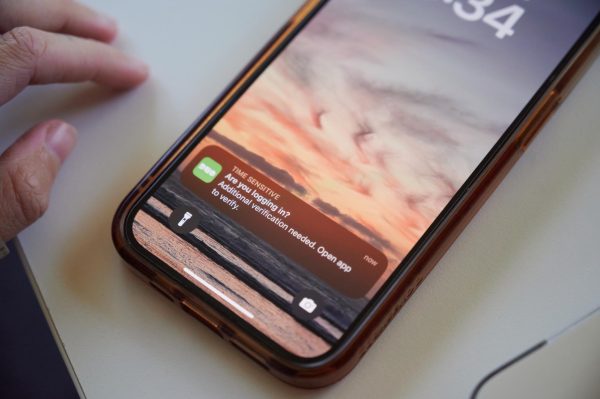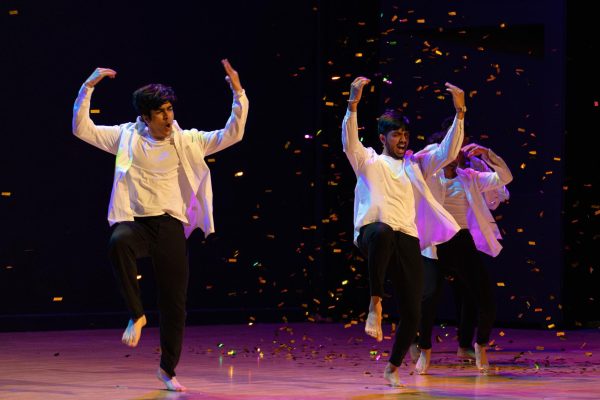ASOSU, SIFC agree to budget with no changes made
February 22, 2016
A board of 15 members from both the Student Incidental Fees Committee and the Associated Students of Oregon State University convened Monday evening to mediate budget proposals for a potential increase in student fees for three campus organizations.
The Student Sustainability Initiative’s proposed fee of $4.98 per student per term, which includes funding for the Night Owl service through the Corvallis Transit System, was passed with all members voting in favor, except for one who abstained.
The Performing Arts budget again saw debate surrounding Mock Trial, but was passed 9-5. Both budgets were passed quickly, but ASOSU’s proposed fee, which included further funding for the SafeRide program was the most controversial topic of the night. The fee was debated first and later tabled to be voted on last.
Almost an hour of the meeting was spent debating ASOSU’s budget. Once their budget was taken off the table it was immediately approved without any additional changes made from the original SIFC recommendation.
The mediation board deliberated a potential $.67 cent increase in student fees for the ASOSU recommended by the SIFC. The proposed third decision package for ASOSU’s budget put the overall student fee increase near its 5 percent increase maximum that would force a review from the Higher Education Coordinating Council (HECC).
ASOSU’s proposed budget increase included an addition of a sixth van and funding to replace the aging technology used with SafeRIde.
Rafid Chowdhury, an SIFC member and the Memorial Union President, argued that ASOSU is mistaking needs for desires that are not necessary.
“It would be nice to have technology that is up to date for everyone, but that is not possible. We are granting your needs (with the proposed budget), but what (ASOSU) wants is desired,” Chowdhury said. “We understand the value of the program, but we cannot fund everything you think is possible.”
The SafeRide program itself currently demands a budget of about $450,000 per year.
The iPads being used for SafeRide have a lifespan of one to two years due to the intense amount of use during work hours. iPads can be on for 70 hours in a single week as drivers use it to connect to the SafeRide app and GPS.
A fully functional SafeRide van, including staff and technology, costs $61,180, according to student advocate Drew Desilet.
The first decision package proposed by ASOSU included a four dollar increase in student fees which originally looked to include an eighth van as well as fund operational costs of the student organization in addition to ASOSU’s current budget of over $1 million.
One of the main goals of SIFC according to SIFC Chair Claire McMorris is to consider the ramifications of what a budget increase for ASOSU could mean for students.
“We need to make sure we are watching out for students. People do not want their fees to go up. SIFC wants to keep the burden low. We need to put all our efforts to make SafeRide the best it can be, and it is possible to do it without raising student fees,” McMorris said.
During the meeting there was a motion to table discussion about SafeRide until the other two budgets were decided. The motion was perceived as an attempt to create wiggle room for ASOSU to obtain more funds to be allocated to their budget, according to SIFC member Gaby Bustos.
While the board discussed the budget for SSI, Chowdhury deferred his time to speak in order for representatives from Corvallis and SSI to speak on behalf of the organization and its budget request.
Emily Bowling, an SSI adviser, said that it is important for the community to have access to both the Night Owl and SafeRide. She said that there should be greater collaboration between both services to serve students. She also said that ever since the SafeRide program began, there steady growth in student ridership has declined. After conducting a conversational ridership survey, approximately 50 percent of those surveyed were student riders on Night Owl.
Earlier in the night, Bustos addressed how the sending of the SSI and Performing Arts budget appeared to be an attempt for ASOSU to gain leverage for their own budget.
Mykael Moore, ASOSU Speaker of the House, addressed a question she received from a reporter and how organizations could rearrange their budgets to prioritize their own needs if budgets are not approved. She originally did not answer the question the day it was asked, but answered it in the meeting.
“You cannot tell an organization how you spend the money you allot to them. They can do what they want once the money is in their hand,” Moore said.
The controversy surrounding Mock Trial was rooted in its travel expenses and how the activity is academic in nature, a criteria that could possibly have made it ineligible to receive funds from incidental student fees.
ASOSU Representative Brant Campbell said that it would have set a new precedent that would allow for even more organizations to seek funding from incidental fees.
“If we allow Mock Trial to be funded, we would be going down a slippery slope,” Campbell said.
Mackenzie Zathan, SafeRide program manager, said how SafeRide is one of the few ways student organizations have taken an active role in creating a preventive method in addressing sexual assault on campus.
“It’s our responsibility to help them,” Zathan said.
After almost two hours of discussions Chowdhury argued that the decision ultimately came down to what student organizations are supposed to stand for.
“At the end of the day it comes down to a balance of values, values of money and the values of the environment,” Chowdhury said. “Sometimes you have to give the benefit of the doubt to the experts sometimes.”
Last year’s ASOSU budget that was approved did not include the new coordinator or the new van they acquired, but the organization still got what they wanted.
Chowdhury saw the $60,000 dollars being used for a single van going against other programs that can serve even more students such as more student jobs and experiences. The student fees could be used for more constructive means. The Corvallis community has seen the SafeRide vans drop off students at parties, according to Chowdhury.
“Engagement is supposed to be the goal (of student fees). But who actually follows that?” Chowdhury said.
























































































































